This compartment was always manned when the ship was at sea, usually with a crew of two. While awaiting any potential emergency, they would update the engineering log books, the fuel consumed per watch, scheduled routine maintenance for the day crew and other engineering type duties.
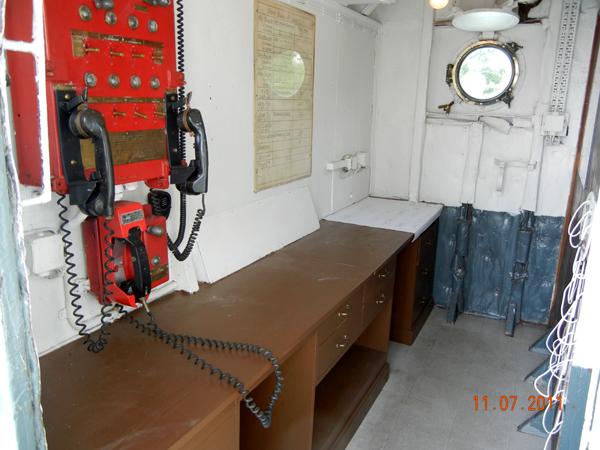 |
| Damage Control HQ (DCHQ) was restored in 2009, however it was enhanced in the Spring of 2011 when HAIDA's ship keeper, Jim Brewer, built a replica desk. This view is towards the port side and aft bulkhead. (Photo by Jim Brewer) |
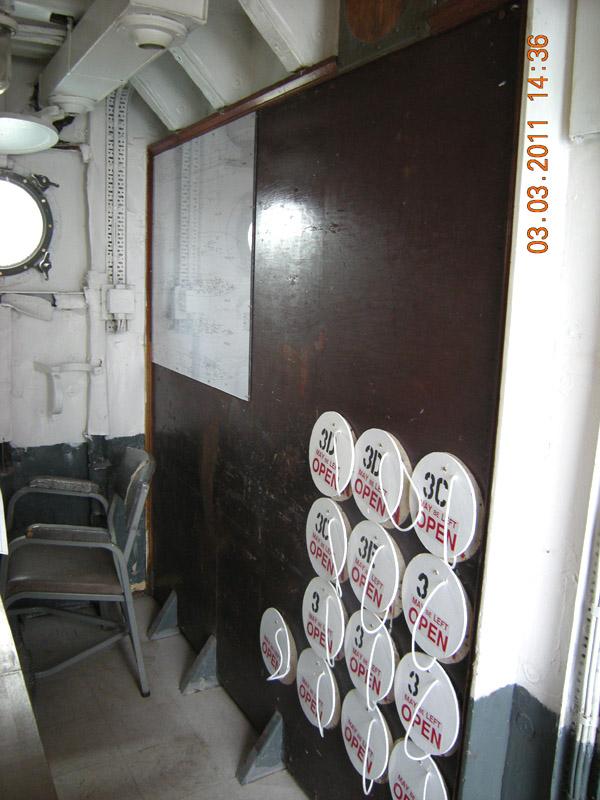 |
| DCHQ forward bulkhead: Mounted there is a drawing of all the ships
compartments that have hatches and a tag board. All of these tags were
replicated to look like the originals.
When at sea, anyone wanting to go below (and keep the hatch open) would first go to DCHQ and sign in the hatch number that was going to be opened. The log entry would include the hatch number, date, time, and crew member's name. Then a peg would be placed into a hole on the drawing which shows the hatch locations. Next, one of those round tags would be placed on or around the hatch that was to be opened. When the work in the area was completed, the hatch would be closed, the tag returned, the log book entry would be closed and the peg removed from the drawing. (Photo by Jim Brewer) |
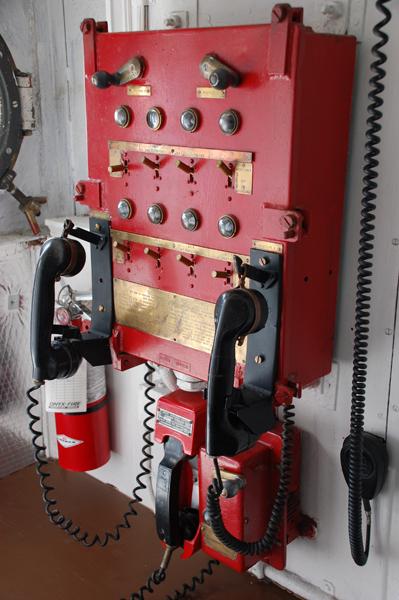 |
| A closer view of the sound-powered telephone switchboard. All the "red" damage control telephones throughout the ship converge on this switchboard. |
 |
| The crew who manned this compartment would keep track of the ship's boiler maintenance and some of the consumables such as water, lube oil , diesel fuel and fuel for the boilers on this stateboard. The green grease-pencil markings are the original markings from October 1963 when HAIDA was paid off. |
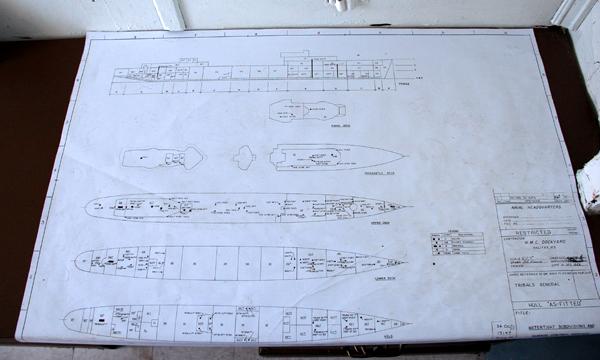 |
| A set of deck plans was always close at hand in order to determine the exact location of an emergency. |
| All photos in this table by Jerry Proc |
FIRE FIGHTING CAPABILITYIt should be noted that Damage Control and Fire fighting were two separate disciplines and were taught at two different RCN schools. At one time, all sailors were required to undergo fire fighting training on a periodic basis. In the early 1950s, most ships including the HaAIDA had a dedicated fire fighting team that were well versed in that task. It was usually comprised of stokers and other seamen such as cooks, stewards, and gun crew helpers.
Here is what HAIDA had in the way of fire fighting capability.
All four magazines had flood valves in case of a fire in an adjoining compartment. The Torpedo Warhead magazine had a sprinkler system which was manually controlled. The ship had many fire hydrants and hoses. Water for these hydrants would be supplied by three pumps feeding a dedicated fire main. There were at least 25 fire extinguishers and numerous axes situated at key locations. Two specific locations were designated for Chemox gear (breathing apparatus). HAIDA did not have any NBCD protection (Nuclear, Biological and Chemical Defence) . Protection against these threats was designed into the follow-on St. Laurent class.
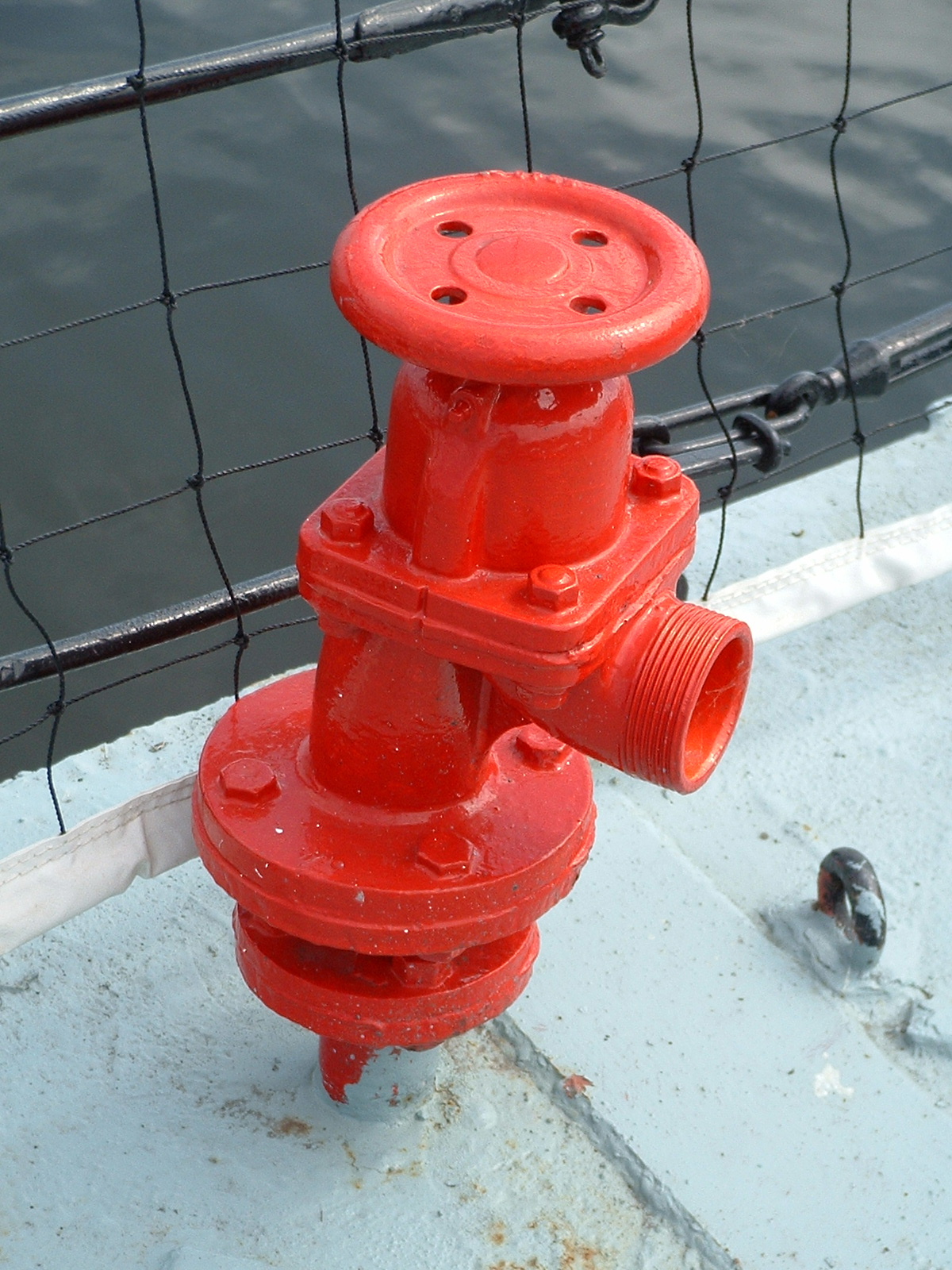 |
| This is an example of a fire hydrant. |
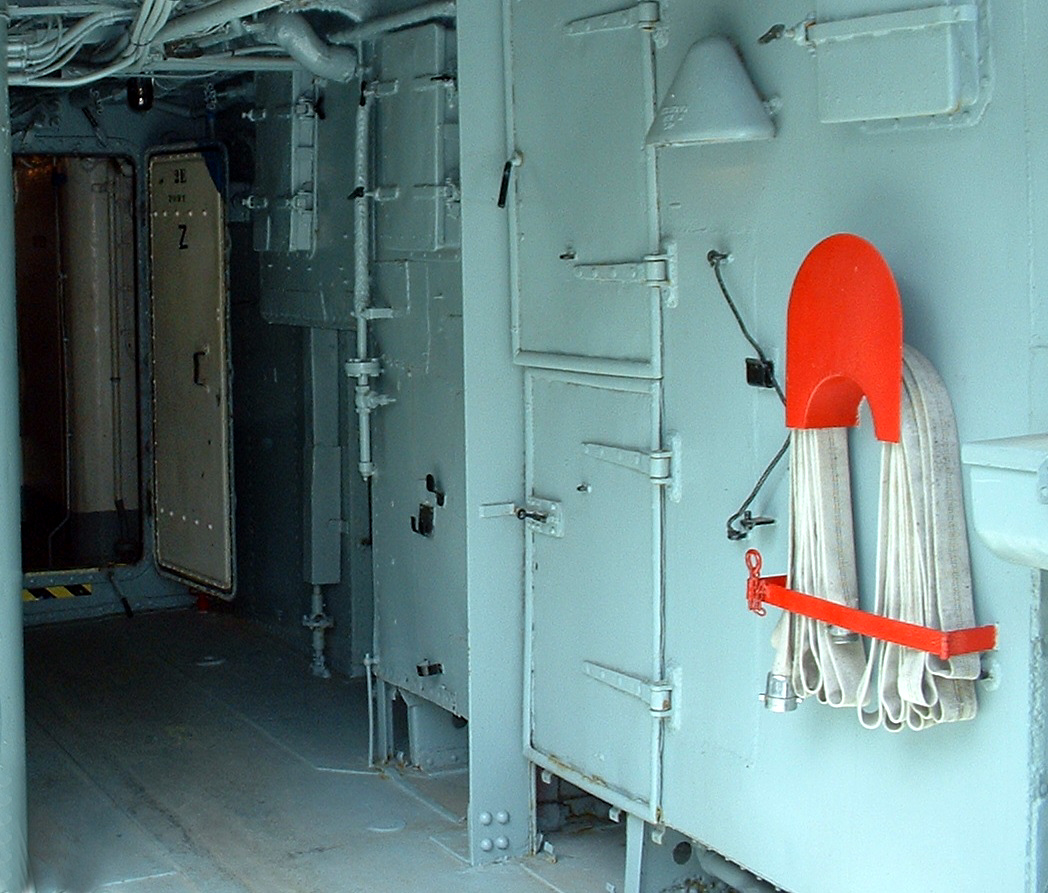 |
| Fire hoses were situated at key positions throughout the ship. |
| This is a steam driven water pump located between the two engine room hatches. It is simply a deck display and not part of HAIDAs original kit. |
| All photos in this table by Jerry Proc |
Mar 22/22